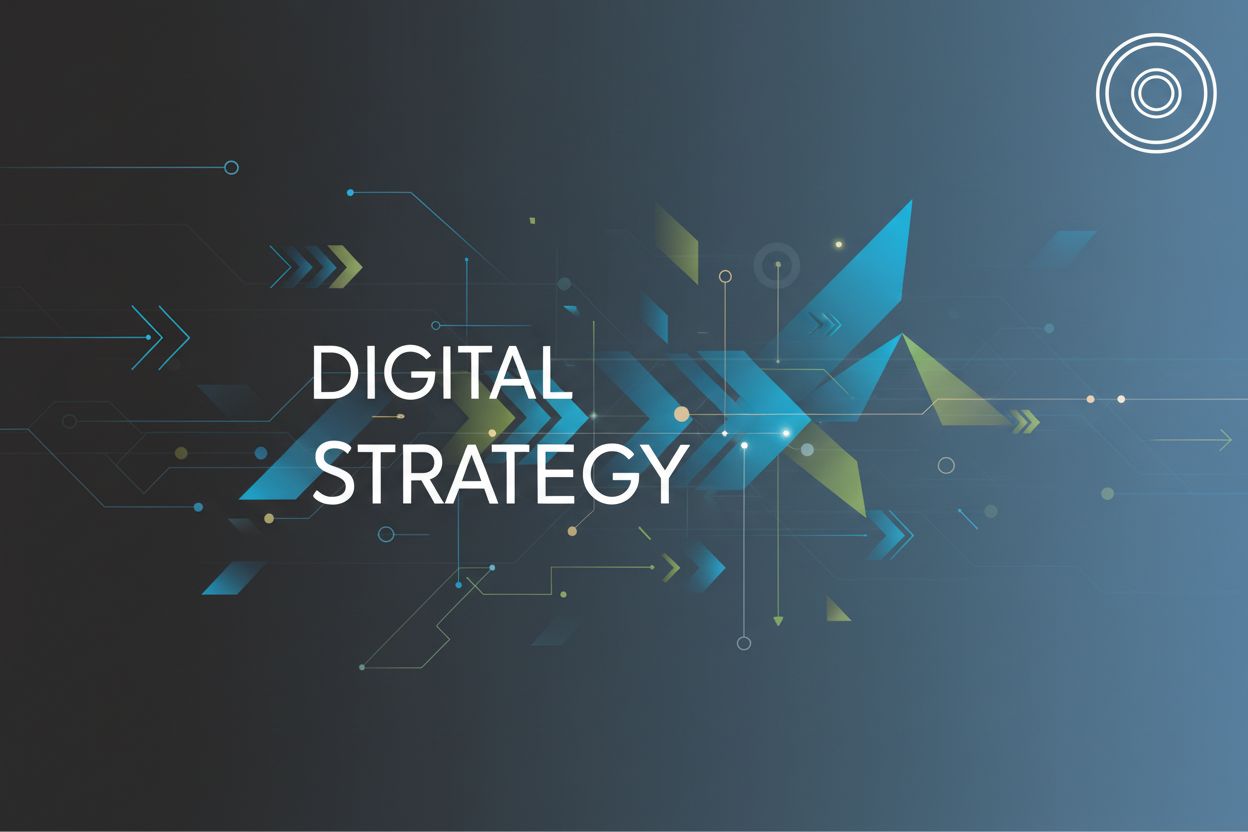An Overview of the 7C Framework in Digital Marketing
TL;DR
Introduction to the 7C Framework
Okay, let's dive into this introduction to the 7C Framework. It's kinda funny how many frameworks there are in marketing, right? Like, do we really need another one? Well, maybe.
The 7C Framework is basically a structured way to think about digital marketing, you know? It's not some magic bullet, but it can help you get your ducks in a row.
It's a strategic approach that focuses on key elements for effective online presence and provides a holistic view of digital marketing components.
- It's a structured approach to digital marketing strategy
- It focuses on key elements for effective online presence
- It provides a holistic view of digital marketing components
Honestly, there's a lot of marketing out there which feels, um, random. Like someone just threw spaghetti at the wall and hoped it stuck. The 7C Framework is trying to avoid that.
It's helps you put the customer first, which, let's be real, is kinda the whole point.
By focusing on known pain points, customers are more likely to engage with product-specific content, like demos, reviews, or case studies.
It's about making content that people actually want to see, and building real connections with your audience.
- Ensures a customer-centric digital strategy
- Helps in creating engaging and relevant content
- Facilitates better communication and community building.
So, yeah, it's another framework. But maybe this one can actually help you make sense of the chaos. Are you ready to learn about the first C?
The 7Cs Explained: Context and its Role
Alright, so we're talking about "Context" in the 7C Framework, huh? I always thought it was kinda obvious, but you know, sometimes the obvious stuff is what trips us up the most.
Basically, context is all about understanding where you are and who you're talking to.
It's more than just knowing your industry, it's like, what's the vibe? What are people actually feeling right now? What are their pain points? It makes sense, right? So, context helps us figure out what people really need.
- Analyzing the Business Environment: Sounds boring, but it's crucial. Are there new regulations? Is the economy tanking? This affects everything.
- Knowing Your Audience: Age, location, income—sure. But also: their values, their fears, what keeps them up at night. What are people talking about online? What are their interests?
- Brand Values and Positioning: Where do you fit in all of this? Are you the luxury brand? The eco-friendly option? You gotta nail your identity.
Imagine you're a healthcare company. If there's a flu outbreak, your content should be about prevention, not just pushing your flu shots. A retail brand might focus on budget-friendly options during an economic downturn.
Or, if you're a financial firm, you don't wanna be all "rah-rah, invest now!" when everyone's worried about the coming recession.
So, yeah, context. It's not rocket science, but it's easy to forget. Next up, we'll see how context influences digital strategy.
Crafting Engaging Content (Content)
Alright, let's talk about crafting content that actually grabs people, not just fills space, you know? 'Cause let's be real, there's a whole lotta blah out there.
It's not just about slapping some words on a page. It's about making somethin' that people wanna read, watch, or listen to. Think of it like this:
- Engagement is King: If your content can't hook 'em, then you've lost 'em. gotta make it interesting enough so they don't scroll past it you know? Like a retail brand using interactive quizzes to help customers find their perfect fit that's way more fun than just reading a product description.
- Trust is Earned: People buy from brands they trust. Content that's honest, helpful, and shows you know your stuff builds that trust over time.
- Action is the Goal: Whether its a sale, a sign-up, or just a share, good content moves people to do somethin'. Like a financial firm offering free webinars on retirement planning, that not only educates but also positions them as a go-to resource.
There's more to content than just blog posts! Think of the different ways you can connect:
- Blogs and Articles: Good for seo and deep dives.
- Videos and Podcasts: Great for connecting on a personal level.
- Infographics and eBooks: Easy to digest info.
But, don't just go willy-nilly creating stuff. Have a plan!
- Keywords matter: make sure people can find your stuff on google.
- Plan it out: A content calendar keeps you on track.
- Get it out there: Don't just create, promote!
Basically, great content is the heart of any good digital marketing strategy. Next up, we'll talk about how to make sure your content is actually seen.
Building a Thriving Community (Community)
Alright, let's dive into building a community – the third "C" in our 7C Framework adventure. Think of your community as your digital water cooler, you know? It's where people hang out, chat, and ideally, talk about you.
First things first, you gotta figure out who "your people" are. It's not just about demographics, it's about understanding their passions, their pain points, and what tickles their funny bone.
- Know Their Interests: Like, is your target audience obsessed with sustainable living? Then showcase your eco-friendly initiatives.
- Create Belonging: Make your community a safe space where everyone feels welcome. That means actively moderating discussions and nipping negativity in the bud.
- Encourage Feedback: Seriously, ask for it! User feedback is gold and can help you improve your products and services.
Now, where do you build this digital haven?
- Social Media: Facebook groups, LinkedIn communities, heck, even a dedicated Discord server can work.
- Your Own Site: A membership site or forum on your website gives you total control.
- Events: Webinars, online workshops, even virtual meetups can foster a sense of connection.
Managing a community isn't just a set it and forget it process.
- Respond Promptly: Don't leave people hanging.
- Set Guidelines: Establish clear rules of engagement.
- User Generated Content: Encourage them to share their stories, reviews, and creative works.
And that's the community "C" in a nutshell. Remember, it's not about broadcasting, it's about building connections. Now, let's move on to the next "C" – Personalization Through Customization.
Personalization Through Customization
Okay, so personalization through customization, huh? It's like, giving people the illusion of control, but in a good way, you know? Like letting them pick their own colors, but still sticking to a pre-approved palette. Tricky, but effective, i guess.
Customization isn't just about slapping a name on an email, it's about letting people tweak the experience to fit them.
- Think of a retail brand that lets you design your own sneakers. It's way more engaging than just picking from pre-made options.
- A healthcare provider could let patients customize their appointment reminders or preferred method of communication -- email, text, calls. That way, its way more likely so people don't miss their appointments.
- Even a financial firm can get in on it, offering customized investment dashboards that show the data most relevant to each client.
It's not rocket science, but its need some effort.
- Personalized email marketing is still, like, the MVP. But step it up with dynamic content that changes based on what you know about the recipient.
- Dynamic website content is another biggie. Show different testimonials based on the visitor's industry, or change the hero image based on their location.
- Product recommendations are the classic example, but go beyond "people who bought this also bought that." Use ai to suggest items based on browsing history, wishlists, even social media activity.
That last one, using ai, could get weird if you're not careful. It might feel intrusive, or the recommendations could be way off. You gotta be mindful of data privacy and ensure the ai is trained on good, unbiased data. But hey, that's the future, right? Next, we'll talk about effective communication strategies.
Effective Communication Strategies
Okay, so we're at the point where we need to talk about how to actually get a handle on communication strategies, right? It's not enough to just have something to say; you gotta make sure people are actually listening.
Think about where your audience actually hangs out, you know? Are they glued to TikTok, scrolling through LinkedIn, or buried in their email? You gotta meet them where they are.
- Email marketing is still surprisingly effective for building relationships, especially with the right segmentation.
- Social media is a must for brand awareness, though, but don't spread yourself too thin.
- Chatbots can provide instant support and answer common questions.
But, it's not just about the platform. What you say matters just as much.
- Keep your messaging clear and concise. Ain't nobody got time for fluff.
- Maintain a consistent brand voice, whether you're snarky, serious, or somewhere in between.
- Tailor your messages to your audience's specific needs and interests. A financial firm isn't going to use the same language with college students as they do with retirees.
And, how do you know if your strategy is working? You need to track it.
- Keep an eye on open rates, click-through rates, and engagement metrics.
- Analyze customer feedback and reviews – what are people actually saying about you?
- Adjust your communication strategies based on what you are seeing. If something isn't working, ditch it.
Communication is more than just talking; it's about connecting. Next, we'll talk about driving sales and transactions.
Driving Sales and Transactions (Commerce)
Okay, Commerce! This is where the rubber meets the road, isn't it? All that marketing stuff only matters if it, you know, makes money. So how do we actually drive sales and transactions in this 7C world?
Well, first off, you gotta make it easy for people to buy.
- Smooth Customer Journey: Think about it—how many times have you abandoned a shopping cart because the checkout process was a nightmare? A clothing brand could let you virtually "try on" clothes with ar, reducing returns and boosting confidence.
- Frictionless Experience: Get rid of all the roadblocks. For example, a financial firm could use automated chatbots to answer quick questions during the application process, so you don't have to wait for a human.
- Multiple Payment Options: Not everyone wants to use a credit card and, sometimes people like to use PayPal. A retail business should also consider "buy now, pay later" options.
It's not just about having a great product. People needs to know about it too.
- Targeted Advertising: Gotta get the right eyes on your stuff, you know?
- Email marketing: The personal touch still matters.
- Social media marketing: Use it to show off your products and how they make people's lives better, get people excited!
Honestly, if you make it easy, give 'em options, and get the word out, the sales will follow. Next up, we have to talk about customer-centricity.
The Cornerstone: Customer-Centricity
Okay, so customer-centricity is, like, the whole point of marketing, right? But how do you actually make it happen? It's more than just saying "the customer is always right" – it's about proving it.
It is the practice of prioritizing the customer’s experience and needs in every aspect of your business. It’s about understanding what customers want, and how they want it, then delivering that – and then some!
- Understanding Customer Needs: This is key. You gotta know what keeps them up at night. Like, what's their biggest problem? A financial firm might offer personalized investment dashboards.
- Building Long-Term Relationships: It isn't just about getting one sale. A healthcare provider could send custom appointment reminders that actually work for people.
- Exceptional Customer Service: It's like, going above and beyond. Like, a retail brand letting you design your own sneakers.
Do not just assume you know what the customer want.
- Customer Surveys: These are your bread and butter. Direct, simple, and effective, right? Ask what you need to know.
- Social Listening: What are people saying about you online? What's the vibe?
- Website Analytics: Where are people clicking? Where are they bouncing? This is pure gold for improving the user experience.
It's about creating a company culture where everyone gets that the customer is the most important thing.
- Train Your People: Teach them how to listen, how to empathize, how to solve problems.
- Empowerment: Let them make decisions that benefit the customer, even if it means bending the rules a little.
- Feedback Loop: Listen to what your customers are saying, and actually do something about it.
As we move on, remember: customer-centricity isn't a destination, it's more of a journey. It's about constantly learning, adapting, and putting the customer first.
Implementing the 7C Framework: A Step-by-Step Guide
Okay, let's get into putting this framework into action. It's not just about knowing the what, but also the how, right? So, how do we turn these 7Cs into a real plan?
First, gotta take a hard look at where you're at. What's working? What's flopping? This includes:
- Identifying strengths, weaknesses, opportunities, and threats: SWOT analysis time! It might seem old-school, but it's effective. For example, a strength might be your strong community engagement (Community C), while a weakness could be a clunky checkout process (Commerce C).
- Evaluating performance against key metrics: Are you hitting your targets for engagement, conversions, or roi? How does your content's performance (Content C) stack up against your communication goals (Communication C)?
- Gathering feedback from customers and stakeholders: What do they actually think of your online presence? Are they finding what they need? This feedback is crucial for understanding your Context and informing your Customer-Centricity.
Next, put together a plan. What are you trying to achieve, and how are you gonna get there?
- Setting clear goals and objectives: Get those smart goals in place. Increase website traffic by 20% in six months? This could be a goal for your Content strategy. Or, improve customer retention by 15% through better Community building.
- Assigning responsibilities and timelines: Who's doing what, and by when? Make sure the right people are owning each C.
- Allocating resources and budget: How much are you spending, and where? Investing in better content creation tools supports the Content C, while budget for community management tools supports the Community C.
Finally, keep an eye on things and tweak as needed. It's a continuous process, not a one-time thing.
- Tracking progress against goals: Are you on track? If not, why? Analyze your data to see which Cs are performing well and which need more attention.
- Analyzing data and identifying areas for improvement: What can you do better? Which channels are performing best, and why? This analysis helps refine your Communication and Commerce strategies.
- Making adjustments to the strategy as needed: Be ready to pivot. What works today might not work tomorrow. Your Context can change rapidly, requiring adjustments across all Cs.
Alright, so that's the overview. Now, let's talk about keeping things going...
Examples of Successful 7C Framework Implementation
Okay, so we've talked about the 7C Framework, but does it actually work, you know? Like, can it turn marketing spaghetti into a gourmet meal?
Well, it's not magic, but several companies have used the 7C Framework with some real, measurable success. Thinking about community, for example, some brands have built crazy loyal followings just by focusing on engaging content and events.
- Increased brand awareness is a big one. When you're consistently putting out stuff your audience wants to see, more eyeballs are gonna find you. For instance, a tech company might create a series of helpful tutorial videos (Content C) that get shared widely on social media (Community C), leading to more people knowing about their brand.
- Customer loyalty is another win. People stick with brands they connect with, not just ones that yell the loudest. Think about how a sustainable fashion brand fosters a strong online community (Community C) where customers share their outfits and tips, making them feel part of something bigger. This deepens their connection and loyalty beyond just the product.
And then there's customization. A travel company that allows users to build their dream itinerary online (Personalization Through Customization C) creates a highly personalized experience that makes customers feel understood and valued, increasing their likelihood to book.
Time to see how to keep the momentum going.
Conclusion
Okay, so we've gone through the 7C Framework – context, content, community, customization, communication, commerce, and customer-centricity. It's a lot, i know, but how do we wrap this all up in a neat lil' bow?
Well, first off, the 7C framework is a valuable tool for strategic digital planning, you know? It's like having a map when you're hiking. You could wander around aimlessly, but you're probably gonna get lost.
- It reminds you to think about everything, not just the flashy stuff. Like, how's your community doing? Are you really communicating effectively?
The thing is, tho, this customer-centricity isn't just a buzzword. It's gotta be baked into everything.
It's an ongoing journey, not a one-time destination.
- You gotta listen to your customers, understand their needs, and actually give them what they want.
And, of course, you gotta stay updated with the latest trends. The digital world is moving fast.
- You can't just set it and forget it. You gotta keep learning, experimenting, and adapting.
So, yeah, that's the 7C Framework in a nutshell. It's not a magic bullet. But it can help you build a digital marketing strategy that actually works.




